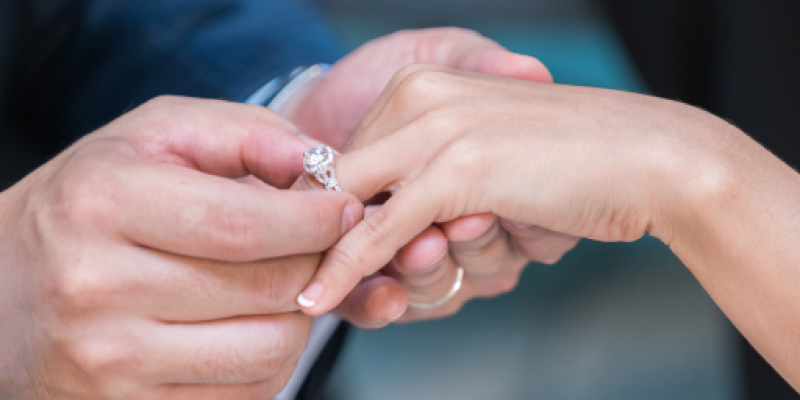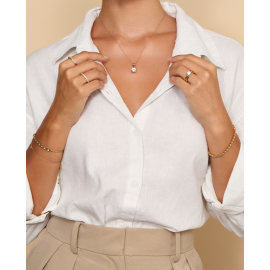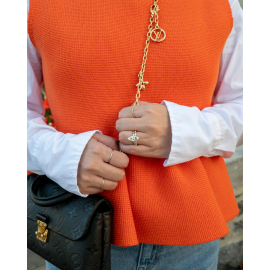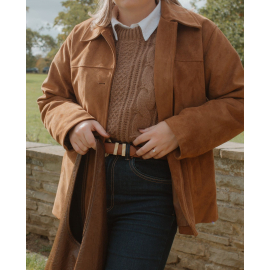Price match guarantee

We’ve teamed up with Klarna to provide flexible payment options, allowing you to shop the way you want. With Klarna, you can split your payment into 3 instalments or choose to pay later, making your shopping experience smoother and more convenient. Your order total must be between £100 and £499 to qualify.

We’ve teamed up with Klarna to provide flexible payment options, allowing you to shop the way you want. With Klarna, you can split your payment into 3 instalments or choose to pay later, making your shopping experience smoother and more convenient. Your order total must be between £100 and £499 to qualify.

October 23, 2020 | by Admin
It is law within the UK that every item of precious metal sold such as Platinum, Gold, Silver is stamped labelling the item with the type of metal it is. Platinum pieces which weigh less than 0.5 grams, 18ct Gold and Palladium pieces weighing less than 1.0 gram and Silver pieces weighing less than 7.78 grams are except from hallmark.
At Diamonds Factory all our products are hallmarked as per UK hallmarking law from London Assay Office (The GoldSmith Company)
The Goldsmiths' Company Assay Office is the oldest assay office in the United Kingdom. It has provided hallmarking services since The Goldsmiths' Company was founded in the 1300s. The company received its royal charter in 1327 and ranks 5th in order of precedence of the 12 Great Livery Companies of the City of London.
Hallmarking dates back to the 1300s when Edward I of England passed a law requiring any item made of silver, which was offered for sale, to be at least of equal quality as that of the coin of the realm (silver currency). The wardens of The Goldsmiths' Company were tasked with visiting workshops in the City of London to assay (test) silver articles. If these articles were found to be below standard they were originally destroyed and the metal forfeited to the King. If they passed, each article received the King's mark of authentication - the mark of a leopard's head. By 1478, there were several hundred workshops and merchants manufacturing silver articles in the City of London. It was not possible for the wardens to visit them all so the merchants were ordered to bring their items to Goldsmiths' Hall for testing and marking and a permanent Assay Office was established in the building. This is the origin of the term hallmark - struck with the King's mark at Goldsmiths' Hall.
In 1544 the Goldsmith's Company adopted the King's mark as their town mark and the mark of the leopard's head is now internationally recognised as the mark of this assay office.
The Goldsmiths's Company Assay Office is still based at Goldsmiths's Hall and remains the oldest company in Britain to be continually trading from the same site. However, it also has two satellite offices; at Greville Street in Hatton Garden in the heart of the London jewellery quarter and within a high security complex near London's Heathrow airport. It now has a new off-site facility within the Dalston-based jewellery manufacturer, Allied Gold. This is the first time in the Assay Office's 700 year history that it has opened permanent hallmarking services on a customer's premises.
In addition to hallmarking, the office has now expanded its range of services to support the jewellery trade and enforcement authorities. It offers a variety of specialist analytical services including nickel, lead & cadmium testing, antique silver dating, non-destructive compositional analysis, plating thickness measurement and a melt and assay service for scrap precious metal carried out in their fully independent on-site laboratory. Other services offered are a jewellery valuation service, laser marking, trading standards assistance, high quality photography and a comprehensive range of training and educational seminars, lectures and specialist events.






Today, proposing with a beautiful engagement ring is seen as one of the most romantic gestures, but did you know it hasn’t always been a way to symbolise love? In ancient times engagement rings were a sign of ownership, but luckily times have changed for the better. The history of engagement rings is an interesting one which we will discuss further in this article.
Where did the tradition of engagement rings come from?
The tradition of engagement rings stems from Ancient Rome - however, they did not have the same meaning as they do today. Throughout history, engagement rings have evolved and adopted the meaning that we know today - a proposition of marriage.
Ancient Rome: A Sign of Ownership
In Ancient Rome, engagement rings had a slightly different meaning - it was less about love and more about ownership. Roman women would often be given a ring made of ivory, flint, bone, copper or iron to symbolise a man’s ownership of them and as a sign of obedience. Some image-conscious women would be given two rings - a gold ring to be worn in public and an iron one for every day at home.
The Middle Ages: A Declaration of Intent to Marry
Throughout the Middle Ages is when the engagement ring started to develop popularity and a slightly different meaning. Around 850, Pope Nicholas I declared that engagement rings showed a man’s intent to marry. During this time, gold was the chosen material for engagement rings.
It is believed that diamond engagement rings originated in 1477 Vienna, when Archduke Maximillian of Austria commissioned a diamond engagement ring for Mary of Burgundy. As the wealthy travelled a lot, the tradition of diamond engagement rings spread to European aristocracy and nobility.
Victorian Times: Engagement Rings & the Industrial Revolution
In the Victorian era, engagement rings were still reserved for the upper class. With the industrial revolution and the discovery of diamond mines, jewellery production became a key focus, and the industry started to thrive.
During the Victorian era, dowries were the most popular way to secure engagement, so engagement rings tended to be on the simpler side - much like the solitaire engagement rings we see today.
20th Century: The Rise of Diamond Engagement Rings
After WW1, engagement ring sales declined and they became less relevant to the younger generation. Diamond prices collapsed, leading to De Beers creating their famous advertising campaign, in 1939, using the message ‘a diamond is forever’. The advertising campaign seemed to work and, by the early 1940s, engagement ring sales increased dramatically for jewellers and department stores worldwide.
Engagement rings were seen almost in the same way as a dowry. Until 1970, in the UK, women had the power to sue a man under ‘Breach of Promise’ if they decided to break off a marriage, whereas if women changed their mind there would be no penalty. This was probably because for most of the 20th Century middle and upper-class women would not work, and working-class women had to give up work when they got married. This meant that if the marriage or engagement ended, the woman could be left with nothing. For this reason, women could keep their engagement ring and sell it to live off the money.
While solitaire engagement rings have long been a popular choice, during the 20th Century other styles became sought after. For example, as demand was high, in the 1980s a surge of gemstone engagement rings came on the market to imitate Princess Diana's sapphire halo engagement ring. Other engagement ring styles looked to the past for inspiration, leading to more vintage style engagement rings on the market.
21st Century: A Time for New Traditions
Typically, the history of engagement has focussed on relationships between men and women. Since the beginning of the 21st Century, there have been reforms in the laws regarding same-sex marriage, which in turn may lead to new traditions forming. In recent years surprise proposals or planned proposals are normal and a lot of couples tend to have discussed a future together before getting engaged. These days, diamond rings aren’t reserved for getting engaged - they are also used as gifts, fashion jewellery and wedding rings.
Peruse our range of diamond engagement rings or head to our engagement ring and wedding ring resizing guide to learn more.